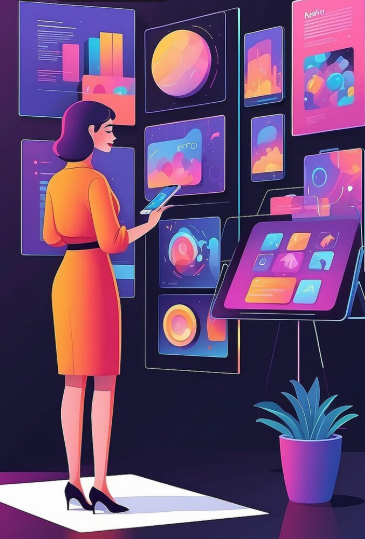Introduction: Marketing in the Age of Micro-Moments
In today’s hyper-connected world, consumers make decisions in seconds—sometimes without even realising it. These intent-driven bursts of activity, known as micro-moments, occur when people reflexively turn and resort to their devices for quick answers, product comparisons, or directions. For marketers, the challenge lies in pinpointing these fleeting opportunities and delivering the right message instantly. When powered by Artificial Intelligence, micro-moment mapping can transform ad sequencing into a deeply personalised experience, maximising relevance and conversion. For learners enrolled in a digital marketing course in Coimbatore, mastering micro-moment targeting offers a strategic advantage in building precision-led campaigns.
What Are Micro-Moments?
Google categorises micro-moments into four main types:
- I-want-to-know moments – Consumers seeking quick information or clarification.
- I-want-to-go moments – Searches for local businesses or nearby services.
- I-want-to-do moments – Looking for instructions, tutorials, or inspiration.
- I-want-to-buy moments – Ready-to-purchase behaviour with high commercial intent.
These moments are not scheduled; they emerge spontaneously based on context, location, and need. A successful marketing strategy anticipates them and responds with precision.
Why AI Is the Game-Changer for Micro-Moment Mapping
Traditionally, marketers have relied on demographic profiles and broad behavioural data to serve ads. AI changes the equation by enabling:
- Real-Time Intent Detection: Analysing user behaviour patterns and contextual signals (time, location, device type) to predict intent within milliseconds.
- Dynamic Creative Optimisation: Adjusting ad content on the fly based on real-time inputs.
- Sequential Messaging: Crafting ad journeys that evolve with the consumer’s engagement level.
AI-driven mapping ensures that each ad in a sequence builds logically on the last, leading the consumer seamlessly from awareness to conversion.
Steps to Create AI-Personalised Ad Sequences
- Identify Micro-Moment Triggers
Analyse search queries, website interactions, and app usage patterns to identify intent signals. For example, repeated visits to “best hiking shoes near me” indicate a high-probability purchase moment. - Map the Journey Framework
Design a sequence where each stage corresponds to a micro-moment type. For instance:
- “I-want-to-know”: Blog or video on hiking shoe benefits.
- “I-want-to-buy”: Location-based discount ad for a nearby store.
- Integrate Real-Time Data Feeds
Leverage APIs for weather, events, or local traffic to adapt ad creatives. If it starts raining, your AI could push ads for waterproof hiking gear. - Test and Iterate
Use AI analytics to measure how each sequence performs, then refine creative and targeting parameters.
Example: AI in Micro-Moment Ad Sequencing
Imagine a user researching skincare tips late at night. An AI-powered platform detects this “I-want-to-know” moment and serves an educational carousel ad. A day later, the same user searches for “best anti-ageing creams” and gets a comparison guide ad (“I-want-to-do” moment). Finally, when they visit an e-commerce site, they see a personalised discount banner—triggering the “I-want-to-buy” moment.
This progression isn’t guesswork; it’s data-driven mapping at work, ensuring that every message lands at the right time with the right intent.
Metrics to Measure Success
For marketers aiming to prove ROI on micro-moment strategies, key metrics include:
- Engagement Rate per Sequence Step: Indicates whether each ad is pulling the user further down the funnel.
- Conversion Time Reduction: Measures how quickly a user moves from awareness to purchase.
- Drop-Off Analysis: Identifies where consumers exit the sequence and why.
- Cross-Device Attribution: Tracks micro-moment influence across phones, tablets, and desktops.
Marketers trained in a digital marketing course in Coimbatore can gain hands-on expertise in setting up these measurement frameworks using AI-powered analytics tools.
Balancing Automation and Human Oversight
While AI excels at micro-moment detection, human judgment remains critical. Over-automation can lead to intrusive targeting, where consumers feel monitored rather than understood. Marketers must balance predictive personalisation with respect for privacy, ensuring that messaging feels helpful—not pushy.
Ethical considerations include:
- Limiting frequency to avoid ad fatigue.
- Respecting opt-out preferences for personalised tracking.
- Avoiding over-reliance on sensitive personal data.
The Future of Micro-Moment Targeting
Looking ahead, AI will be able to combine micro-moment mapping with predictive modelling—anticipating not just when a moment might occur, but also why. For instance, AI could identify seasonal intent spikes for certain products and prepare adaptive ad sequences in advance.
Voice assistants, wearable tech, and augmented reality will further expand the range of detectable micro-moments, creating even richer opportunities for marketers.
Conclusion: Winning in the Moments That Matter
Micro-moment mapping with AI is not about flooding users with more ads—it’s about delivering fewer, more relevant, and better-timed messages. This approach respects the consumer’s time and intent while driving higher engagement and conversion rates.
For professionals learning through a digital marketing course in Coimbatore, mastering the art of AI-personalised ad sequencing offers a powerful toolkit for future-ready marketing campaigns. In the race for attention, it’s not the loudest voice that wins—it’s the one that speaks precisely when the audience is ready to listen.




